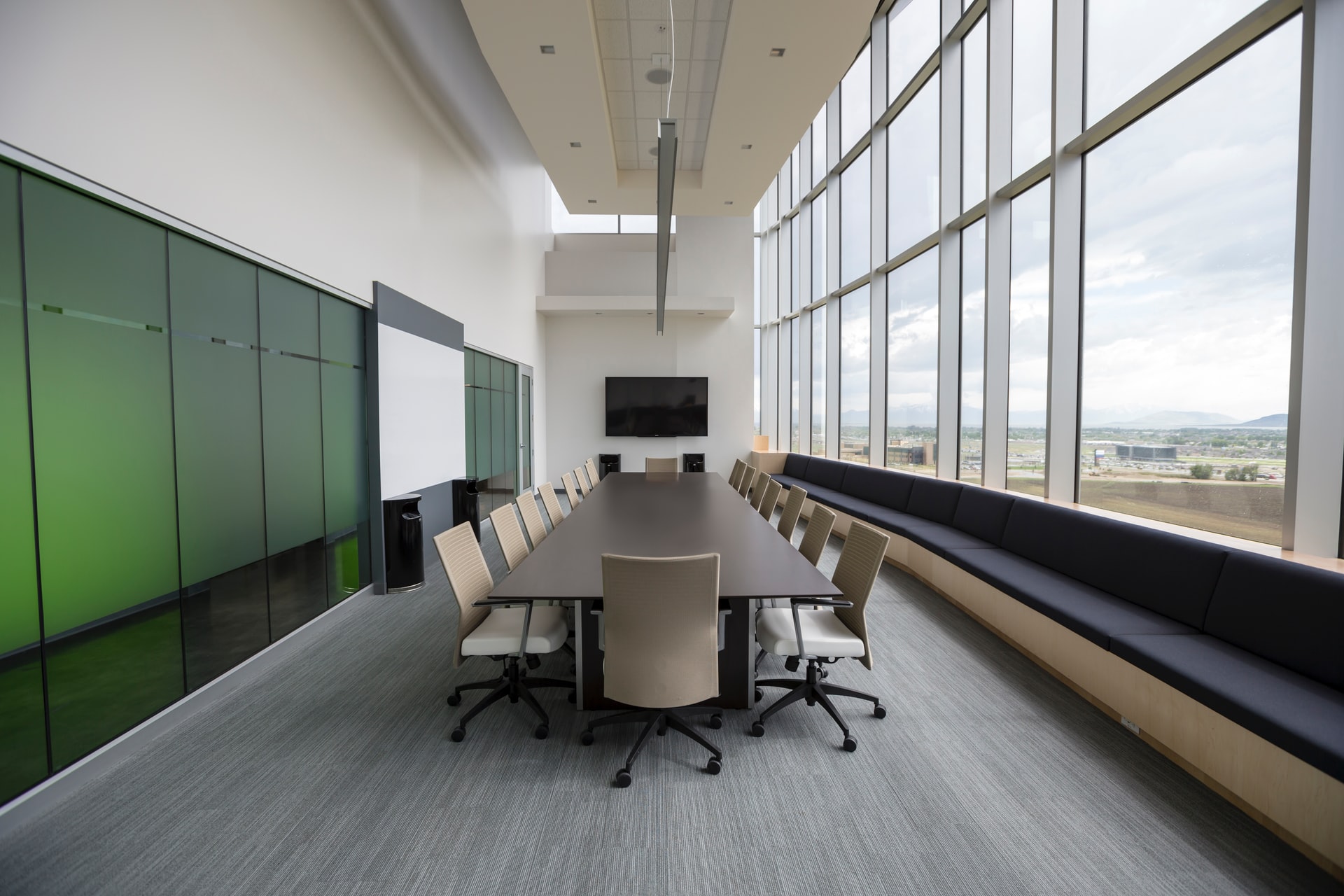Your boardroom is the lifeline of your company, the place where you make decisions, innovate, and win business. Therefore, you need the audio-visuals of your boardroom to be seamless and effective.
To help, we’ve developed this guide to setting up audio-visuals for the boardroom, from project brief and budgeting right through to choosing the right audio-visual solutions partner.
How audio-visual solutions can transform your boardroom
Before we delve into setting up AV solutions for your boardroom, let’s quickly tour the main ways they can transform your boardroom for the better.
Improving sound and visual quality
The right audio-visual solutions improve the sound and visual quality of any conference calls, presentations, and visual meetings taking place in the boardroom. This ensures all attendees can take part in and contribute to meetings while taking valuable information away.
Aiding collaboration
AV solutions turn your boardroom into a place for collaboration – allowing employees to share metrics and work on information together regardless of whether they’re in the same room or dialing in from different countries.
Relevant reading: How to facilitate better communications in your company
Enhancing productivity
Seamless and user-friendly audio-visual solutions eliminate wasted meeting time spent connecting computers, re-dialing lines, or calling in IT. Instead, they enhance productivity by allowing users to jump straight into the matter at hand.
Increasing performance
Audio-visual equipment is often used to deliver company metrics in a clear and easy-to-consume format, keeping employees engaged with overall business performance. This can aid boardroom meetings and conference calls while inspiring teamwork.
Impressing potential clients
Your AV solutions tell potential clients a lot about your business. Seamless and innovative tech makes you appear cutting-edge and easy to work with; unreliable and difficult to use systems make you seem outdated and inefficient.
Setting up audio-visual solutions for the boardroom
Excellent output requires excellent input, which means great AV solutions require more than simply hanging a TV screen on the wall and leaving an HDMI cable on the desk. Instead, setting up audio-visual solutions for the boardroom is an eight-part process:
1. Discuss your boardroom audio-visual equipment with your boardroom users
The employees using your boardroom audio-visual equipment are the employees that will make it work for your business. Therefore, it’s vital to seek their input early on, on topics including current frustrations, must-have features, desirable tools, and users’ technical abilities.
Now’s also an excellent time to find out what equipment people use in the boardroom. For example, if your employees all use iOS, you need compatible AV solutions.
2. Involve the right people in your AV project
The people involved in your AV solution project depends on your business structure, but ultimately you need the following tasks and expertise covered:
- Specifying and costing your AV requirements
- Installing AV solutions
- Overseeing installation
- Training employees
- Interior design or office maintenance.
3. Create a project brief
Setting up audio-visual equipment in your boardroom is a project, so treat it as such by creating a project brief that covers:
- Project owner – who will manage the project
- Project timelines – key milestones and deadlines
- Key deliverables – what you want the project to achieve
- Budget – the maximum amount of money available for the project.
Tip: To ensure your project falls within your IT budget, work with a technology solutions partner to source the most cost-effective equipment for your needs.
Once complete, share your project brief with your key stakeholders and persons responsible.
4. Outline the key activities taking place in your boardroom
Working with your project stakeholders, outline the main boardroom activities requiring audio-visual solutions now and in the future.
For example, everyday boardroom tasks benefiting from innovative AV solutions include video conferencing, presentations, team projects, KPI reporting, and virtual events.
5. Identify the AV equipment and specifications needed
Using your list of key activities, identify and spec your boardroom AV requirements.
To do this, think about:
- Who’s using and operating the equipment
- Requirements to connect with virtual attendees
- The size of the room and the number of people it holds
- The acoustics of the room and external noise
- The distance between the screen and the people viewing it
- The room layout and the requirement for wireless infrastructure.
Tip: an audio-visual solutions provider will help specify your exact requirements and find the right equipment to meet your needs.
6. Oversee installation of your new boardroom AV equipment
If you’re not confident installing AV equipment yourself, a reputable technology solutions provider can set up your boardroom video conferencing and AV equipment for you, using vetted ICT hardware.
During this process, they’ll set up your equipment to meet your boardroom and employees’ requirements – including setting the right screen resolutions, installing the right software, and testing that everything works as it should.
7. Create pre-set controls
People become frustrated with audio-visual equipment when they must continuously adjust the settings to meet their needs, which is a common problem in a boardroom with many different users.
Ask your audio-visual supplier to create custom pre-set controls that enable users to revert to default settings at the end of a meeting, ready for the next user. Even better, ask them to create a variety of pre-set controls for different meeting types, such as in-person meetings, conference calls, and virtual presentations.
8. Train staff how to use audio-visual equipment
Finally, give your new audio-visual set-up the best chances of success by training employees to use the equipment. It’s also a good idea to leave a quick-reference user guide in the boardroom that people can use to refresh their memory on topics or solve common problems.
Tip: Use your staff training as an opportunity to identify any problems or required tweaks early on – allowing your solutions provider to rectify them before you go live.
Final thoughts
Great businesses deserve great audio-visuals, so it’s crucial you know how to find and set up the right solutions for your boardroom.
We hope this guide to boardroom AV equipment provides you with everything you need to know about setting up audio-visuals for your boardroom – all you need to do now is begin your project.




